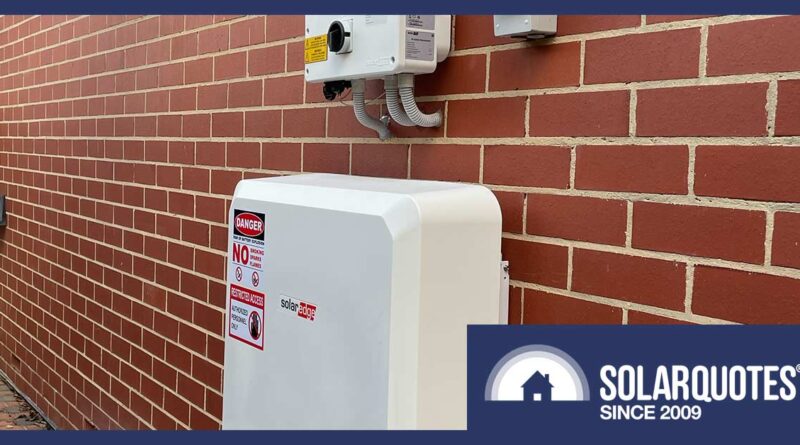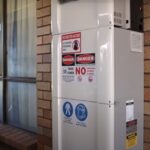Thinking About A Home Battery? Better Think About Where.
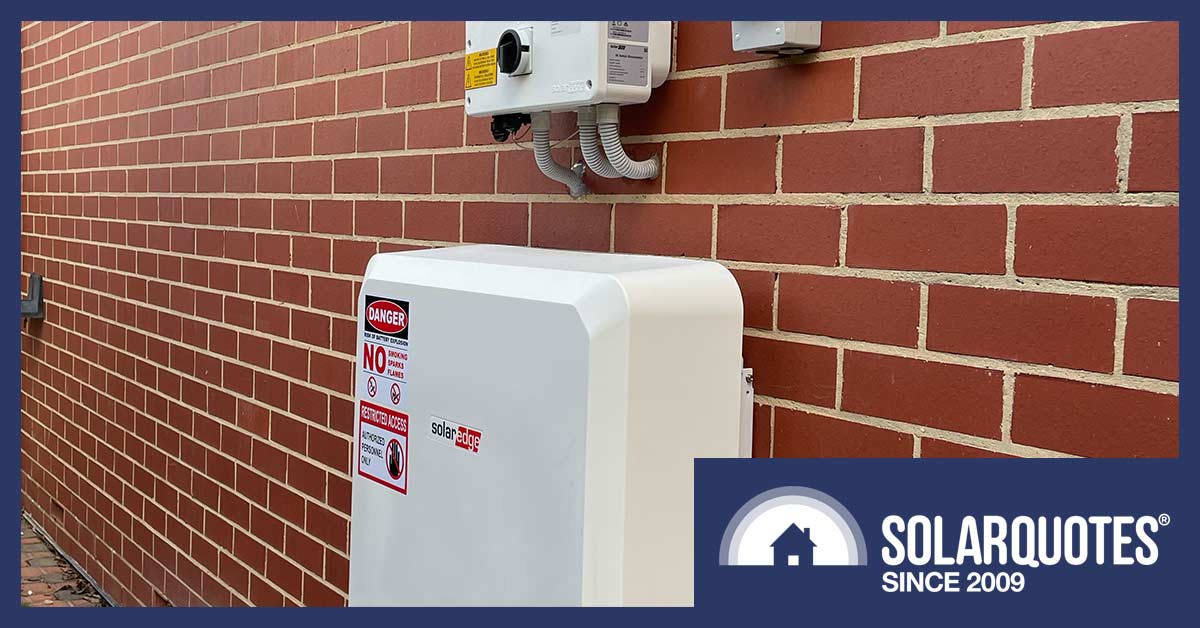
The Australian Standard for home battery installations is quite strict about where solar batteries can and can’t go.
The best place to install a home battery or two is usually in a cool garage1, behind bollards where necessary.
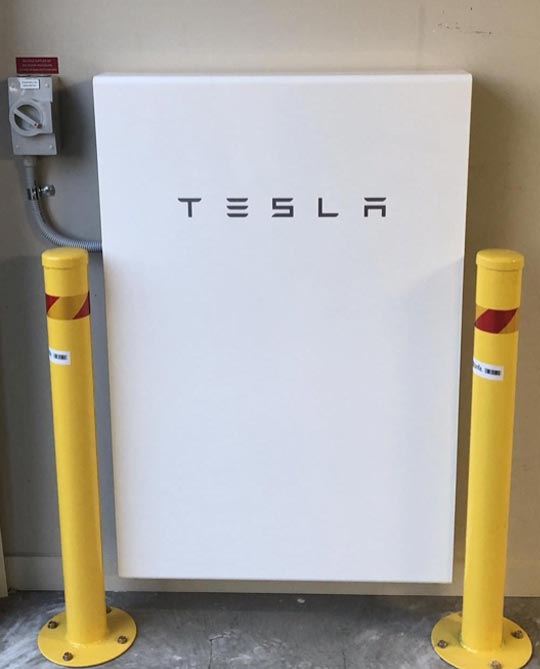
Installation: Goliath Solar & Electrical
But where else can batteries go?
To be honest, that is a question that plagues a lot of installers. Around the side of the house might seem ideal, near the switchboard, but often it’s not – particularly if that puts your battery in the hot afternoon sun.
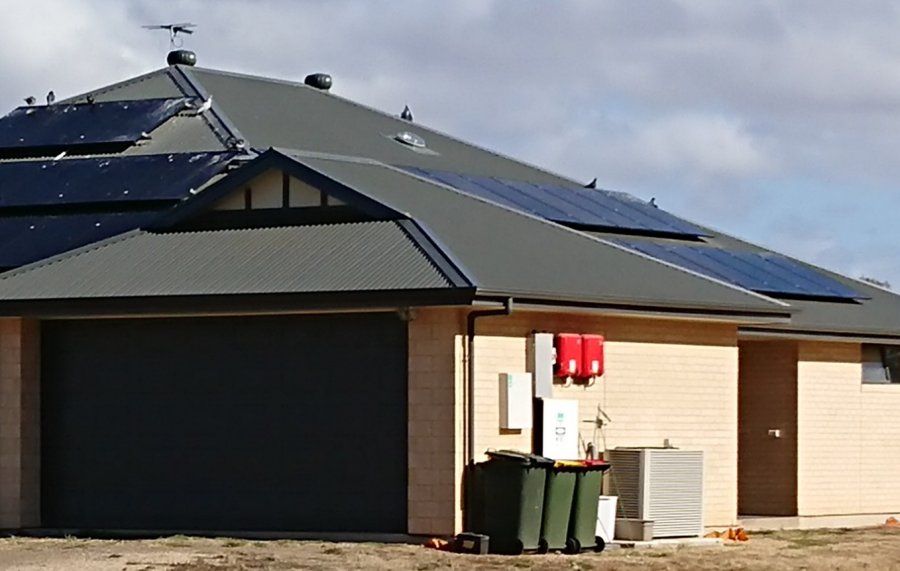
In the blazing afternoon sun, right next to the hot breeze coming from the air conditioning unit, is such a hellish place it probably voids the warranty.
Back in the days when lithium-ion home batteries were brand new and the Tesla Powerwall still had some curves like a plump toddler, the electrical industry waited with trepidation for Australian Standard AS51392, which would mandate where home batteries could be installed.
Rumour had it that the standard would force all new batteries inside a proverbial brick shithouse. But thankfully, the idea of a freestanding fireproof kiosk wasn’t mandated. It would have made things very expensive and electrical connections very difficult.
The new rules have been out for a while now and the industry has had time to interpret them, so I’ll outline the main points to consider so your home battery location complies.
I’m Talking About Lithium-Ion Batteries
The standards were originally created to ensure lead-acid batteries did not accumulate explosive hydrogen gas in a building. Lead-acid energy storage is still in use, primarily to power off-grid homes. But their only advantage – a lower upfront cost – is gone now. Vale lead-acid. The scrap man will miss you.
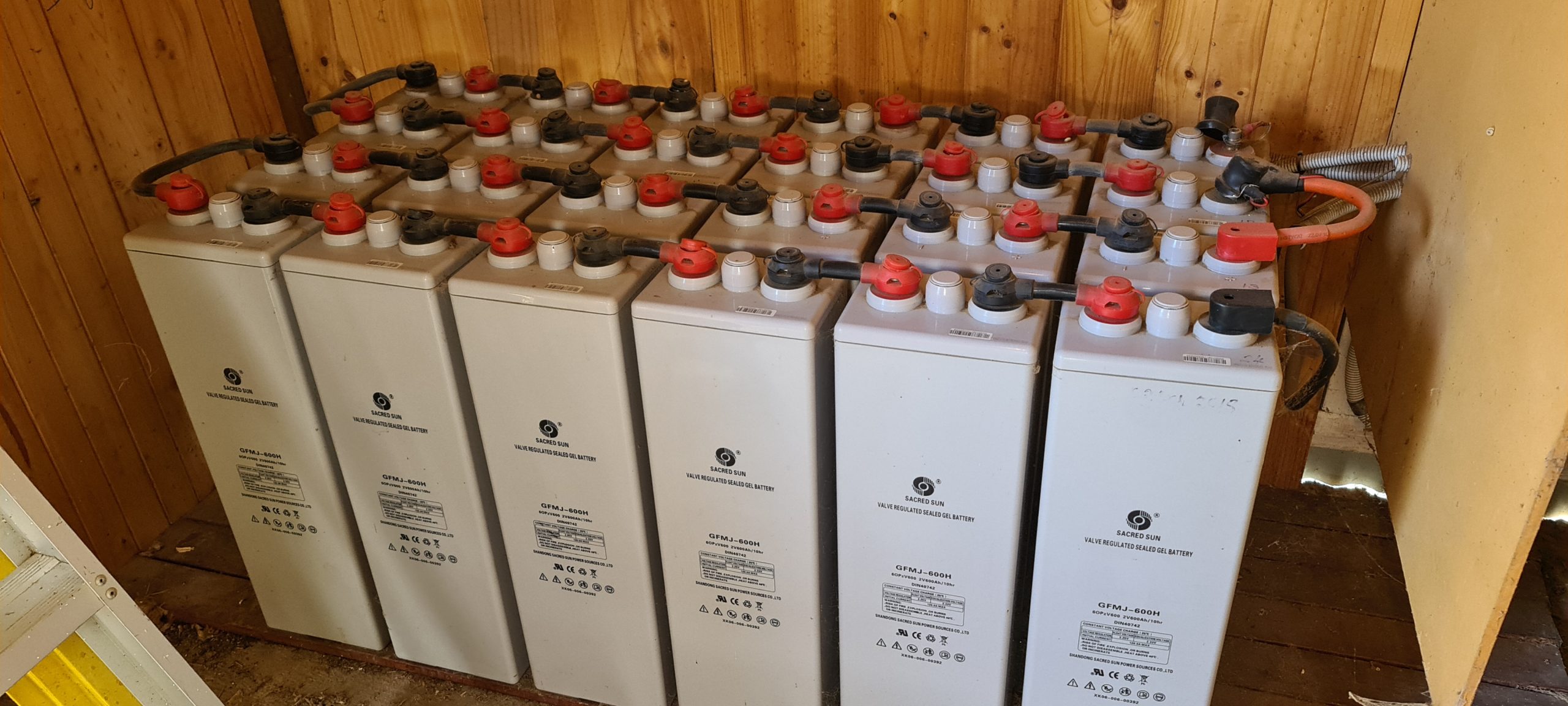
This is what a ton of lead looks like as nominal 2-volt cells in series.
These days it’s (almost) all about lithium chemistry batteries. They’re smaller, lighter and have far better electrical performance. It seems the only downside is we are still working out how to recycle them as well as we do lead-acid, and lithium-ion is just a bit more spectacular in the unlikely event of thermal runaway.
Forbidden Home Battery Locations
There are lots of places your battery cannot go. To cite the rules almost verbatim, restricted locations include:
- within 600mm of any exit
- within 600mm of any vertical side of a window, or any building ventilation, opening into a habitable room
- within 600mm of any appliance
- within 900mm below any opening into a habitable room, vent or appliance
- in ceiling spaces
- in wall cavities
- on roofs (except where specifically deemed suitable)
- under stairways (with or without naughty children)
- under access walkways
- in an evacuation route or escape route.
- blocking access to a switchboard (see AS 3000)
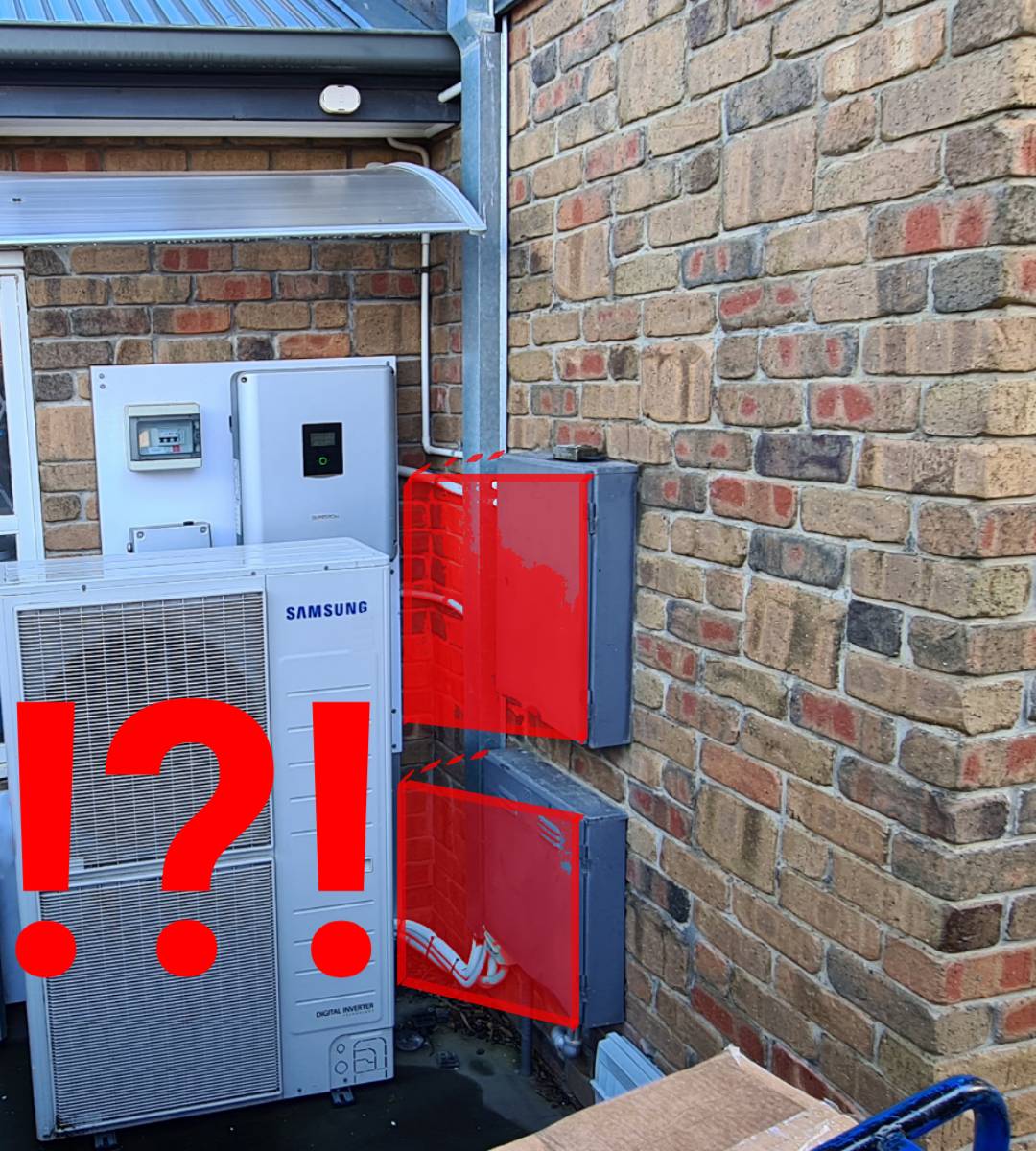
You can’t access the switchboard when the ‘fridge mechanics put an air-conditioner unit in front of it. Just how do we get to the inverter or even open these meter boxes?
Garage Doors: A Silly Rule
Below is a classic example of standards gone a little batty. The rule states that a battery shall not be installed within 600mm of any exit to a building envelope, including garage doors.
So while you can’t put a battery next to a personal access door that’s 0.75 metres wide, the same rule applies to a double garage door… at 5.4 metres wide. I think we can all make our minds up about that one.
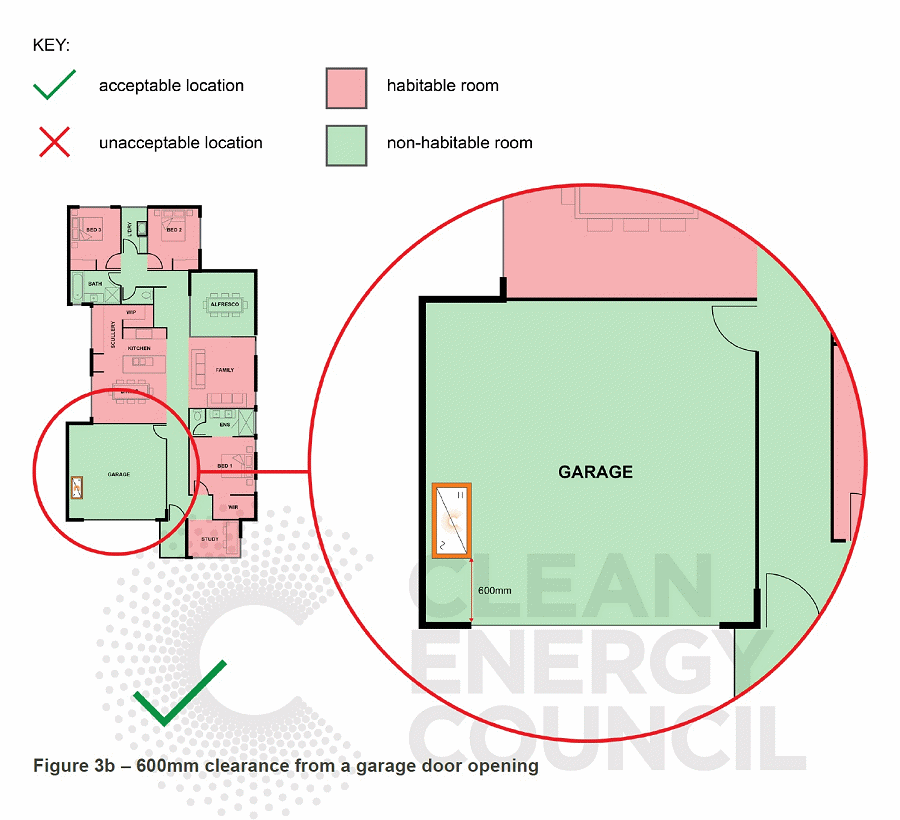
Somebody at the CEC has a sense of humour – they specifically enlarged the most ridiculous part (while also putting the “alfresco” inside the building). Interestingly, the requirement to have protection that stops you crashing your car into the battery seems to have escaped this drawing. The industry go-to is a yellow bollard bolted to the garage floor.
Fire-Rated Barriers & Habitable Rooms
Because some people don’t even know when their arse is on fire, the standards dictate your battery must be on a fire-rated surface – but only if there is a habitable room behind the wall.
Cement sheet weatherboards, plastic joining strips, as well as vents and expansion joints in brick walls often mean your wall isn’t deemed a fire-rated barrier. 300mm of space away from the wall can solve these problems entirely.
Note: A common misinterpretation of AS5139 is all batteries must be installed on a fire-rated barrier, regardless of the proximity of habitable rooms. This is not correct.
Associated Equipment Can Be in The Battery Exclusion Zone
As you can see, the exclusion zone is pretty big.
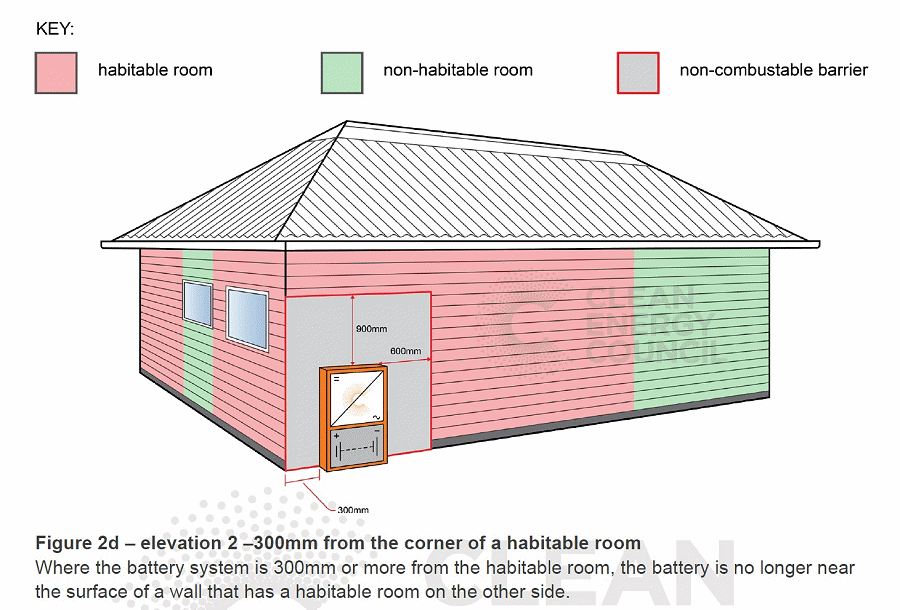
Image Credit: CEC – as if you don’t already know that thanks to the GIANT WATERMARKS
This is a large area to exclude any other appliances from. Luckily ‘associated equipment’ such a solar inverter can be inside this zone.
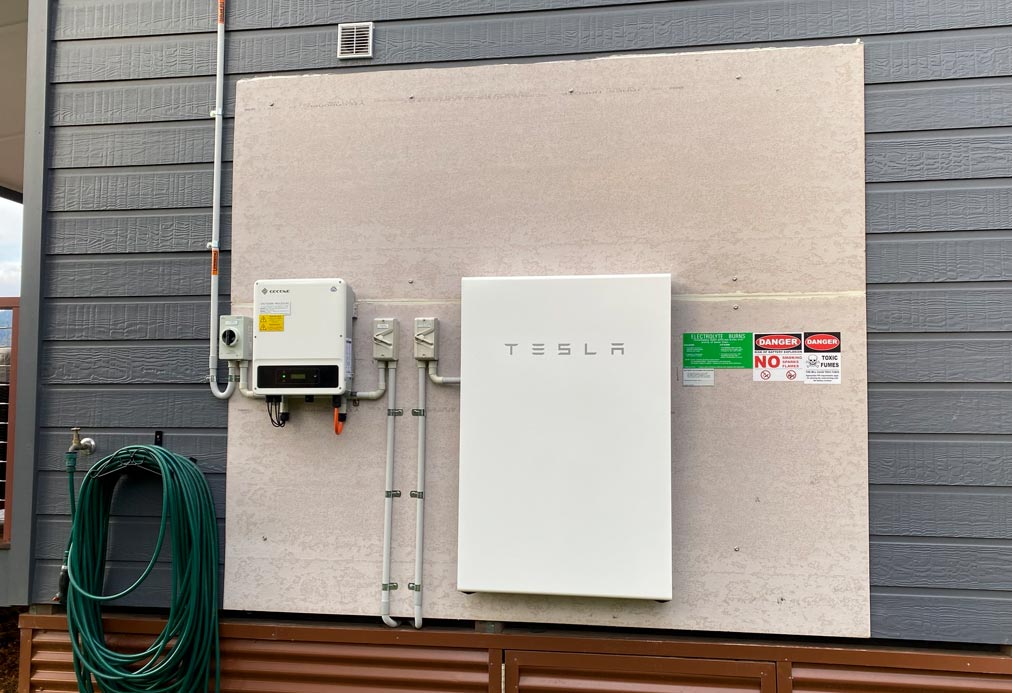
Installation: Lightning Solar & Electrical Melbourne
Battery Form Factors
Some batteries are just a big single lump, like a SolarEdge Home Battery. Others are a bloody huge lump, like the 236 kg Z-Cell flow battery. I can tell you first-hand that when one of those behemoths is expected to go on a 1.2 m high shelf inside a cupboard on the tiled verandah of a heritage house, ‘difficult’ is putting it politely.
Modular Batteries
Other batteries come in neat little blocks that nest together (Sungrow and BYD should be applauded here):
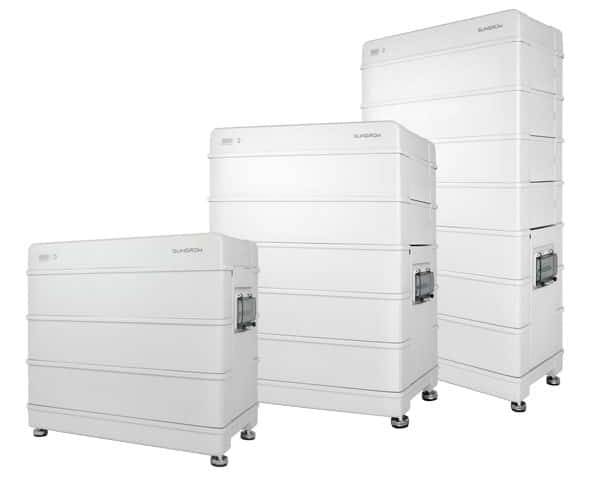
Sungrow make good modular batteries.
Rack Mount Batteries
Others come in slabs that fit into a standard computer server rack (Pylontech and Australian-made PowerPlus for example):
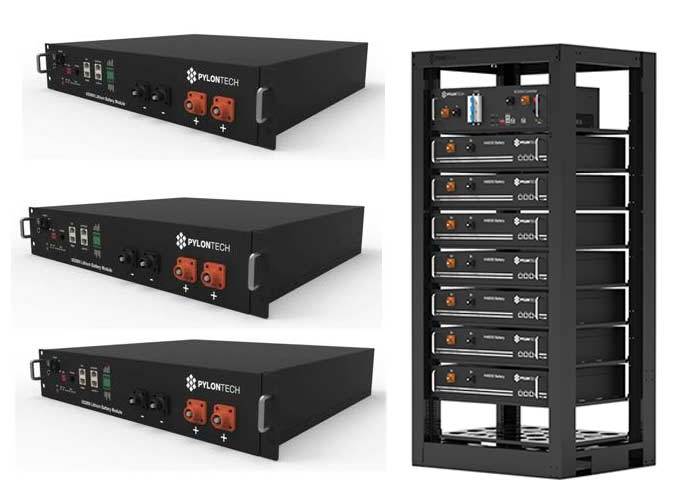
Pylontech batteries can be rack-mounted.
These are pretty easy to handle and allow you to grow capacity incrementally with your use or budget. But if you wait more than a year to expand, you risk the battery model becoming obsolete stock, so be careful.
All-In-One Batteries
All-in-one batteries have the battery inverter or hybrid inverter in the same box as the battery. They hook up like any hard-wired appliance so there can be some simplification in the wiring.
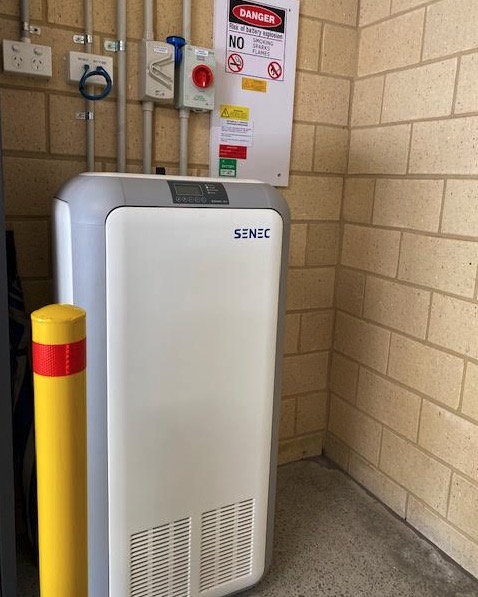
All-in-one batteries can simplify wiring. Senec installed by JCW Electrical
Connections
Where your battery goes will affect the length of cable runs for power and communications. Long and difficult cable runs can significantly add to the difficulty and cost of the installation.
Power
If your battery is DC-coupled, it must be pretty well adjacent to the inverter controlling it.
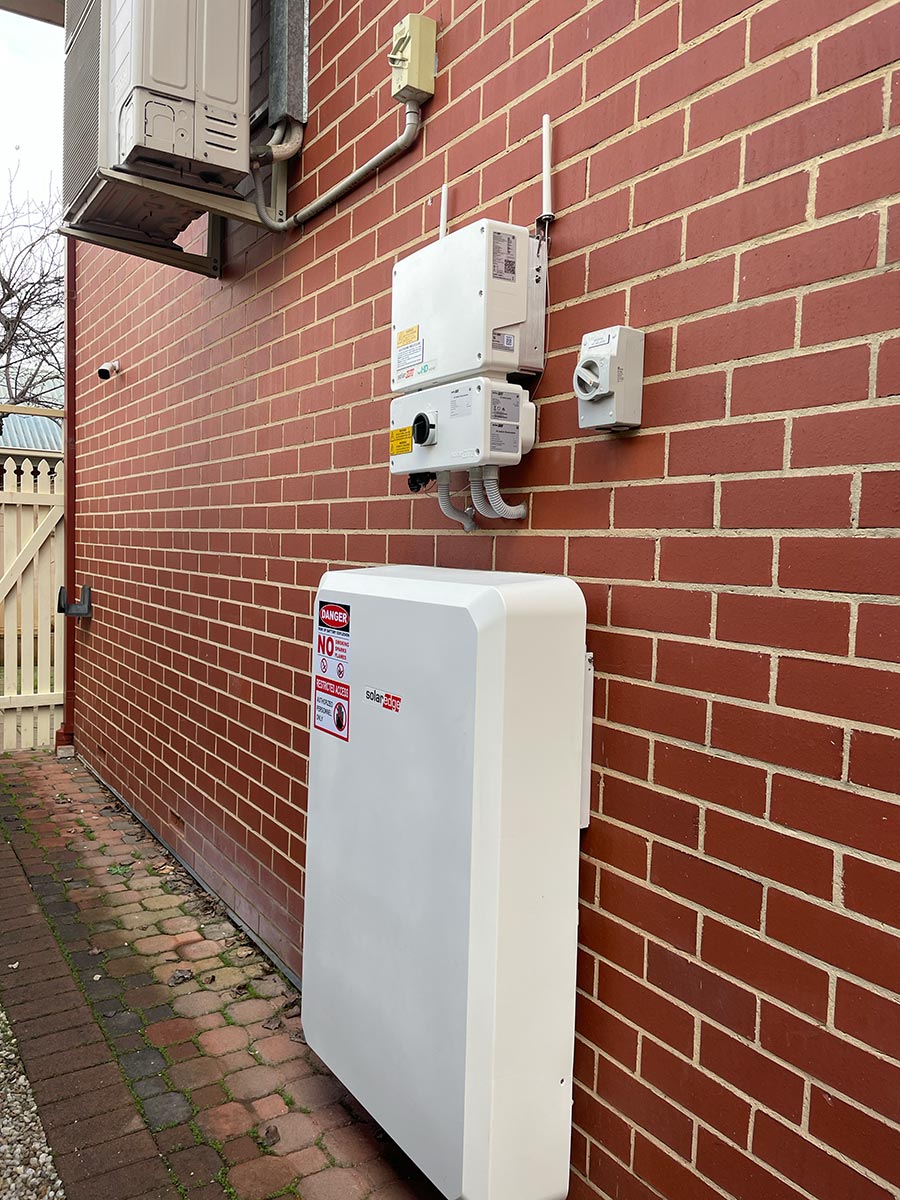
This DC-coupled battery is right next to its hybrid inverter. Installation: SEM Group
If your battery is AC-coupled, you have more flexibility with location. The inverter can be some distance away. This is good news if you have microinverters, which are obviously, on the roof.
Communications
Many batteries or their accompanying inverter need a solid internet connection for commissioning, monitoring, warranty and/or network approval or control.
A wired internet connection is best because it is immune to Wi-Fi password changes and weak wireless signals.
All of these battery systems also need a consumption meter to monitor comings and goings from the grid. This communication link usually needs to get to your switchboard. Some consumption monitors offer a wireless link, but again, wired is more robust and preferred by every installer I’ve ever met.
The Ideal Location
When choosing where your battery will go, it must:
- comply with AS5139
- be next to the battery or hybrid inverter if it is a DC-coupled battery
- be out of the direct sun
- and ideally, be easy to get the power and communication wiring to it.
If you are retrofitting a battery, your list of possible locations is probably very short.
If you are installing ‘battery-ready’ solar, consider where it will go and place your inverter accordingly.
If you are building a home from scratch, make sure you’ve got a compliant spot in mind for the battery, and talk to a good installer about what pre-wiring you can do for comms and power.
Footnotes
- In your new electric car to be more precise, but that’s a discussion for an entirely different post.
- AS/NZS 5139:2019 “Electrical installations – Safety of battery systems for use with power conversion equipment.” A bargain at only $280.62 for an un-shareable, non-portable, print-once if you are lucky, DRM’d to the eyeballs protected PDF.
Original Source: https://www.solarquotes.com.au/blog/battery-installation-locations/

